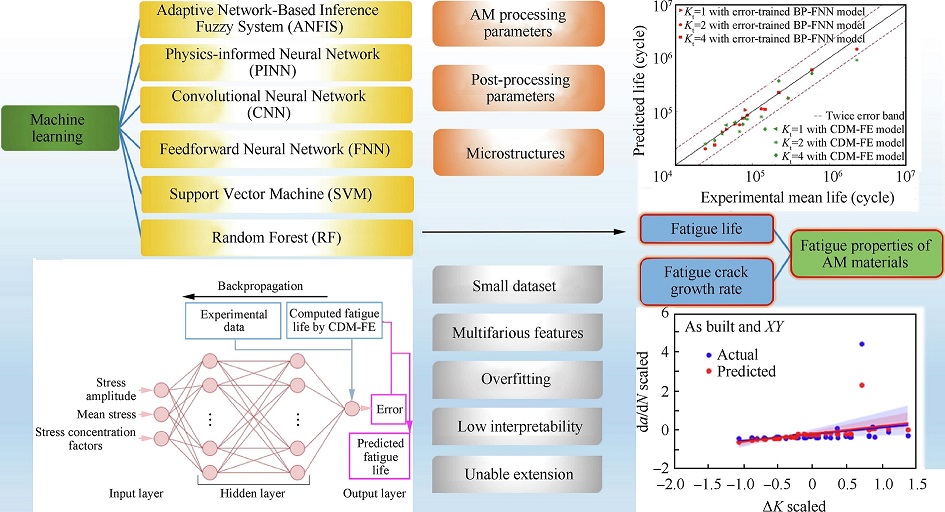YI Min, XUE Ming, CONG Peihong, SONG Yang, Haiyang Zhang, WANG Lingfeng, ZHOU Liucheng, LI Yinghong, GUO Wanlin
Chinese Journal of Aeronautics , 2023.
Abstract: Fatigue properties of materials by Additive Manufacturing (AM) depend on many factors such as AM processing parameter, microstructure, residual stress, surface roughness, porosities, post-treatments, etc. Their evaluation inevitably requires these factors combined as many as possible, thus resulting in low efficiency and high cost. In recent years, their assessment by leveraging the power of Machine Learning (ML) has gained increasing attentions. A comprehensive overview on the state-of-the-art progress of applying ML strategies to predict fatigue properties of AM materials, as well as their dependence on AM processing and post-processing parameters such as laser power, scanning speed, layer height, hatch distance, built direction, post-heat temperature, etc., were presented. A few attempts in employing Feedforward Neural Network (FNN), Convolutional Neural Network (CNN), Adaptive Network-Based Fuzzy Inference System (ANFIS), Support Vector Machine (SVM) and Random Forest (RF) to predict fatigue life and RF to predict fatigue crack growth rate are summarized. The ML models for predicting AM materials’ fatigue properties are found intrinsically similar to the commonly used ones, but are modified to involve AM features. Finally, an outlook for challenges (i.e., small dataset, multifarious features, overfitting, low interpretability, and unable extension from AM material data to structure life) and potential solutions for the ML prediction of AM materials’ fatigue properties is provided.
Keywords: Additive manufacturing; Machine learning; Fatigue life; Fatigue crack growth rate; Prediction

Link: https://www.sciencedirect.com/science/article/pii/S1000936123003801